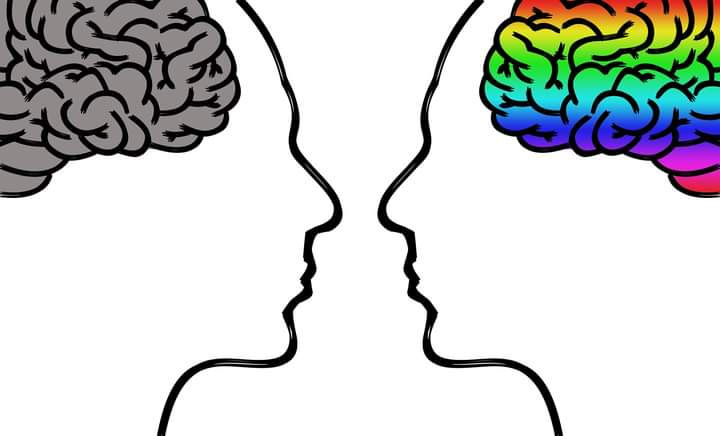Chronic Pain
- Debora Wiseman
- 13 de set. de 2022
- 3 min de leitura

Chronic pain can be defined as continuous or recurrent pain lasting at least three months; its function is alert and, generally, it has an uncertain etiology, it does not disappear with the use of conventional therapeutic procedures, and it is the cause of prolonged incapacity.
Pain is a very important signal for the human body as it reveals that something is not working as it should. Chronic pain is a real symptom that the body needs help.
Pain is an unpleasant sensation located in some part of the body, which is usually caused by tissue damage, such as a cut, burn or inflammation, or by nervous system stimuli. situations such as stress, trauma, anxiety and depression are important for the intensity and duration of pain.
Main types of chronic pain
Pain can appear anywhere in the body, and it can have different causes, depending on its type. Determining the type of pain is very important for the doctor as it will determine the best type of treatment for each person. To identify the type, the doctor does an analysis of the symptoms along with performing a physical exam.
The main types of chronic pain and their possible causes are:
1. Somatic pain
This is pain that arises due to an injury or inflammation of the skin tissues, which is detected by the sensors of the nervous system as a threat, and persists as long as the cause is not resolved.
Possible causes: Cut; burn; blow;fracture; sprain; tendinitis; Infection; muscle contractures.
2. Neuropathic pain
Pain that happens due to nervous system dysfunction, whether in the brain, spinal cord or peripheral nerves. It is common for it to appear in the form of burning, prickling or tingling.
Possible causes: Diabetic neuropathy; carpal tunnel syndrome;trigeminal neuralgia; narrowing of the spinal canal; after stroke; neuropathies of genetic, infectious or toxic substance causes.
3. Mixed or unspecific pain
It is pain that is caused either by components of neuropathic pain, or by unknown causes.
Possible causes: Headache; herniated disc; cancer; vasculitis; osteoarthritis that can reach several places such as knees, spine or hip, for example.
Treatment
The treatment of chronic pain is complex and involves care indicated by the doctor, in addition to the use of analgesics and anti-inflammatory drugs.
The treatment for chronic pain is individualized, oriented according to the needs of each person, and can be done by the general practitioner or, in more complex cases, by pain specialists.
The main forms of treatment include:
1. Use of medication: analgesics, anti-inflammatory, In some cases, the doctor may indicate the use of auxiliary medications depending on the type of chronic pain, regardless of the degree of intensity, such as antiepileptics, antidepressants and muscle relaxants, for example.
2. Injections and infiltrations
In some cases it will be necessary to perform infiltration or injection at the pain site. Injection or infiltration is done through the application of drugs directly to the nerve endings, such as anesthetics, steroids or neuromuscular blockers with botox, for example.
This type of treatment must be done by qualified doctors to reduce the sensation of pain, inflammation and muscle spasms, with effects that last for weeks to months.
3. Physiotherapy
Physiotherapy may be indicated for some types of pain, especially when there is limitation of movement. Thus, in physiotherapy sessions, appropriate exercises are performed that help not only to promote pain relief but also to prevent joint stiffness and muscle flaccidity.
In cases of somatic pain, the application of cold-heat can also help relieve pain.
4. Alternative therapies
Doctors affirm that alternative therapies are excellent ways to improve body perception, relieving tension and nervous stimuli, which has a great influence on pain and the effectiveness of conventional treatments.
Physical activities, practiced regularly, at least 3 times a week, is very useful to relieve various types of chronic pain;
Relaxation techniques decrease contractions and improve the body's self-awareness.
As the pain improves, the doctor may remove some forms of treatment so that less and less medication is used. However, alternative therapies can be maintained, and are great ways to prevent new pain frames
5. Surgery
There are cases of chronic pain that are difficult to treat, as they do not improve with drugs or alternative treatments. Thus, some surgical procedures can be performed, mainly by neurosurgeons and orthopedists.
Chronic pain causes a lot of discomfort and disturbs quality of life. For this reason, it is essential to seek an accurate diagnosis and start the best treatment as soon as possible.
Seek professional help
Remember that you don't play with health, so always pay good attention to your physical and emotional body!
In addition to our tips, it is essential to seek professional help from a competent doctor and therapist if chronic pain is impairing your performance in your daily life.
Regular therapy is a great way to better understand your triggers and identify ways to better manage your pain.
IMPORTANT: We are Holistic Therapists and our treatment is alternative. Even with satisfactory results, it is essential to emphasize that only duly qualified doctors can diagnose diseases, indicate treatments and prescribe medication.
All the best.
See you next week
Shalom!
Debora and Daniel Wiseman





Comentários